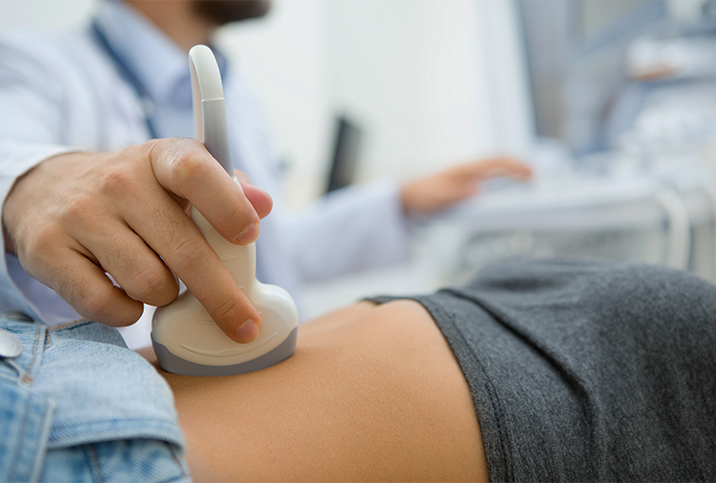Symptoms and Diagnosis of Endometriosis

Endometriosis is a disease that affects more than 6.5 million women in the United States. Despite its prevalence, one survey indicated less than 33 percent of women don't have a good understanding of the disease.
Endometriosis has a wide variety of symptoms that are often confused with other disorders, making diagnosis difficult. If endometriosis is not caught early or is left completely untreated, women can experience painful symptoms, ranging from cramping to infertility. Women should understand the symptoms of endometriosis, as well as the diagnostic tools used, so they can be informed about their health and take the necessary steps for treatment.
An overview of endometriosis
Endometriosis is an often painful gynecological condition in which the tissue that lines the uterus (endometrium) grows outside of the uterus and on structures such as the fallopian tubes, ovaries, bladder, ureter and intestines. In rare cases, the tissue can continue to spread beyond the pelvic organs.
For a woman without endometriosis, the endometrium builds up throughout her menstrual cycle—in anticipation of possible pregnancy—and sheds if conception does not occur. In women with endometriosis, the abnormal tissue outside of the uterus (growing on tubes, ovaries, etc.) similarly builds up and sheds.
This shedding of endometrium outside of the uterus is dangerous, as there is nowhere for the shed tissue to exit the body, thus it builds up, creating cysts and irritating the surrounding tissues. Those irritated tissues result in scar tissue, adhesions and inflammation.
The blocked tissue usually results in painful menstrual cycles, discomfort during sex and much more. For women with endometriosis, the range of painful symptoms experienced varies and does not indicate how severe or advanced their condition is.
Risk factors and causes
Endometriosis can affect any woman of reproductive age, but certain risk factors make it more likely, such as:
- A first-degree relative (mother, sister, daughter) with endometriosis
- No children before the age of 30
- Has frequently experienced abnormally long or short-interval menstrual cycles
- Has uterine abnormalities
At this time, scientists don't really know what causes endometriosis, but there are several theories. Some researchers hypothesize genetics plays a serious role in the development of the condition. While no specific genetic error has been identified, it's clear women with a family history of endometriosis are more at risk, and a genetic link could explain the connection.
Some researchers think the disease is linked to environmental exposure to chemicals. A 2013 study indicated women who were exposed to certain pesticides (from landscaping and lawn care) were 30 to 70 percent more likely to develop endometriosis. Those pesticides are no longer permitted for use in the U.S.
Symptoms of endometriosis
While there are some consistent symptoms of endometriosis, the intensity varies by individual. It's important to note some women won't experience symptoms at all and might not be diagnosed with the condition until an abdominal surgery or when they struggle with fertility issues. The severity of symptoms does not indicate the stage of endometriosis.
The most common symptom of endometriosis is pelvic pain, which is usually strongest during menstruation. While many women experience cramping on their period, endometriosis pain is usually much stronger.
Other symptoms of endometriosis include:
- Dysmenorrhea (painful periods), causing intense cramping before and during a woman's period, spreading throughout the abdomen and lower back
- Heavy flow during periods and spotting in between periods
- Painful intercourse
- Painful urination and bowel movements
- Fatigue
- Diarrhea and constipation
- Nausea
- Infertility
Because many of these symptoms are similar to other conditions, it's sometimes difficult to diagnose endometriosis. It's often mistaken for irritable bowel syndrome (IBS), ovarian cysts or pelvic inflammatory disease (PID).
When to see a doctor
It can be difficult for some women to know when to see a doctor. Symptoms such as cramping or heavy flow can easily be confused with common period pain. However, because endometriosis can cause infertility, it's important to get a proper diagnosis early. If you are experiencing any of these symptoms, or if you have a family history of endometriosis, schedule an appointment with your gynecologist.
Diagnosing endometriosis
Diagnosing endometriosis is often difficult as the disease can appear as other common conditions, and there is no noninvasive way to definitively rule out endometriosis.
The first step in making a diagnosis will usually be a pelvic exam. Your doctor will start by asking you questions about your symptoms and family history, then move on to the exam, where they will palpate your abdomen, looking for abnormalities, such as scar tissue or cysts.
Often, it's difficult for doctors to feel endometriosis because the shed tissue is too small. The only way to feel the tissue through a pelvic exam is when the tissue has accumulated enough to form a cyst.
The next diagnostic tool is an ultrasound or MRI. In an ultrasound, a doctor will use a transducer either against your abdomen or inside your vagina to search for cysts. An ultrasound cannot definitively determine if you have endometriosis, but it can confirm cysts usually associated with endometriosis. An MRI uses radio waves to create a detailed image of your organs, which can tell doctors where exactly your endometrial tissue and cysts are located.
The most invasive, and therefore usually last resort, form of diagnosis is a surgical procedure called a laparoscopy. In a laparoscopy, the surgeon will make an incision near your navel and insert a laparoscope to find endometrial tissue outside of the uterus. This is the clearest way for your doctor to locate the tissue and see the scope of the growth.
What's next?
Once your doctor has confirmed your endometriosis diagnosis, treatment can begin. For patients, this means pain management. In advanced cases, treatment can include hormone therapy or conservative surgery. If you're looking to get pregnant, fertility treatments may be included in your treatment plan.
Endometriosis can be incredibly painful, but you don't have to suffer in silence. If you have experienced any of these symptoms, talk to your doctor about getting tested for endometriosis.


















